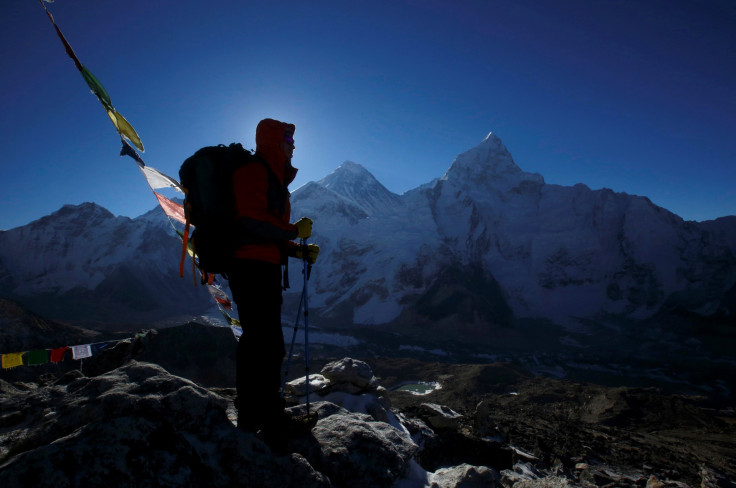Mount Everest: 4 Deaths In 4 Days As Climbers Scale Peak After 3 Years

After being closed to climbers for two consecutive years due to a deadly avalanche in 2014 and a devastating earthquake in 2015, Mount Everest, the world’s tallest peak, began its climbing season earlier in May and hundreds of enthusiastic mountaineers made a beeline to attempt reaching the top. But tragedy struck afresh in the harsh, unforgiving heights as four people died since Friday and two others are still missing.
The first casualty was on Thursday, when 25-year-old crew member Phurba Sherpa fell to his death while fixing a route 150 meters (about 500 feet) below the summit, according to a report by CNN. A Dutch triathlete, Eric Arnold, 36, died Friday night and 34-year-old Maria Strydom, a finance lecturer at Monash University in Australia, died Saturday while returning from the summit, according to BBC.
Both Arnold and Strydom were traveling with Seven Summit Treks, and the company’s owner, Tashi Lakpa Sherpa told CNN that a heart attack was the suspected cause for Arnold’s death. He also said that a rescue attempt for Strydom failed to reach her.
An Indian man, Subhash Pal, 44, died Sunday night due to exhaustion while being rescued to lower camps from near the summit, according to Wangchu Sherpa, the managing director of Trekking Camp Nepal. Another climber from Pal’s 4-member team, Sunita Hazra, fell sick and was moved to a camp at a lower altitude where she is reportedly safely resting.
However, the other two members of the Indian group, identified as Paresh Chandra Nath and Goutam Ghosh, went missing on Saturday, and the chances of their survival are slim, according to Wangchu Sherpa.
About 30 climbers are suffering from frostbites or have fallen ill on the mountain, according to the BBC report, even as about 400 climbers have scaled the peak from the Nepalese side in the last two weeks.
Some tour operators are blaming inexperienced climbers and cheap equipment for the mishaps.
“Many climbers without any experience crowd Everest every year, and companies often use poor quality equipment … offering cheap packages to clients who are exposed to security risks,” head of Nepal Mountaineering Association, Ang Tshering Sherpa, told Reuters.
Government officials, on the other hand, blamed climbers for not being inadequately prepared.
“The deaths were not due to accident or the crowd,” Tourism Department official Sudarshan Dhakal said. “Energy loss and altitude sickness mean that they were not well prepared.”
The window to climb to the summit, which is 8.850 meters (29,035 feet) tall, opened on May 11, but high winds have affected the attempts made by climbers on some days. Monsoons will bring heavy rains and cloud cover next month, making it even more treacherous to attempt the summit.
© Copyright IBTimes 2024. All rights reserved.











